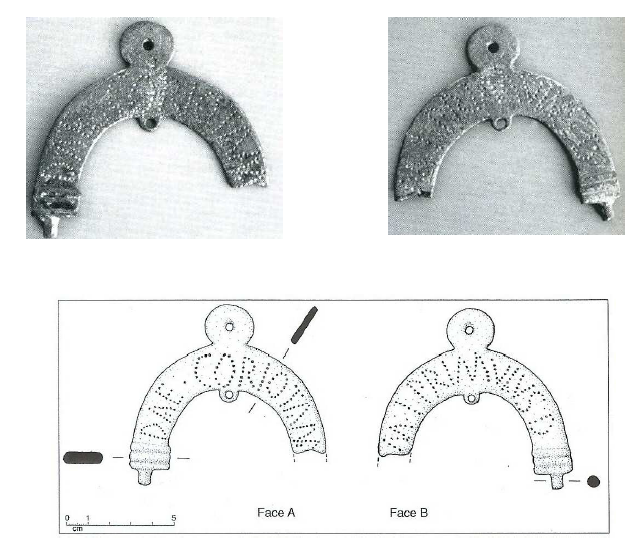f) Coriotana (‘Mistress of the Troops’?)
It is interesting to note that another goddess name comprises the same root corio-, ‘army’ or ‘troop’.Coriotana is mentioned in a dedication, probably dating from the 2nd c. AD, discovered in 1998 in a field at a place known as ‘Le Village’, in Optevoz (Isère), in the territory of the Allobroges.1644 According to André Pelletier, Optevoz may have been a secondary town of the city of Vienne.1645 The inscription is dotted and engraved on the upper part of a hanging in bronze. The object is missing: it may have been a representation of the goddess.1646 On face 1, it reads: D(e)ae Coriotana[e], ‘To the Goddess Coriotana’, and on face 2: M(arcus) I(ulius) Primulus d(edit) or d(edicavit), ‘Marcus Iulius Primulus offered (this)’ (fig. 41).1647 The dedicator bears the tria nomina of Roman citizens. Delamarre breaks down her name as Corio-tanna, but does not propose any etymology* for the second element of it.1648 As for Lambert, he suggests that this divine name might end in –ama, like Belisama, and mean ‘Mistress of the Troops’.
As Coriotana is known by this single inscription and as the place of discovery does not give any information on her cult, one can only rely on etymology* to comprehend her nature and functions. Being related to the army, she might have been a goddess of the battlefield and war, but this remains only a hypothesis.
